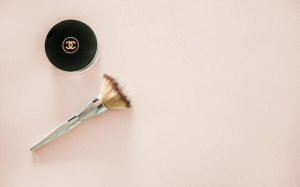Picture a world where “Redefining Beauty: Fenty Beauty vs. Glossier – Inclusivity in the Beauty Industry” is not just a phrase, but an actual movement.
Recent years have seen a transformation in the beauty industry, as Fenty Beauty and Glossier lead the charge for inclusivity and transparency. These trailblazers are redefining what it means to be beautiful by catering to diverse skin tones, breaking gender norms, and collaborating with influential figures who embody their values.
This blog post delves into how these two powerhouse brands are reshaping the landscape of cosmetics and skincare. We’ll explore Fenty Beauty’s impact on addressing underrepresentation in mainstream beauty products while also discussing Glossier’s unique approach to customer engagement through social media platforms.
Moreover, we will examine how embracing gender neutrality within marketing strategies is challenging traditional norms in the beauty space. Additionally, we’ll touch upon current trends such as increasing consumer preference for skincare products over makeup sales.
Finally, this insightful piece will showcase other brands following suit by expanding their product offerings and adopting authenticity as a key factor in successful brand messaging – all part of Redefining Beauty: Fenty Beauty vs. Glossier – Inclusivity in the Beauty Industry revolution!
Table of Contents:
- Fenty Beauty’s Impact on the Beauty Industry
- Glossier’s Approach to Inclusivity and Transparency
- Challenging Traditional Gender Norms
- Collaboration with Influential Figures
- Skincare Sales vs Makeup Sales Trends: The Rise of Simplicity
- Brands Following Fenty Beauty and Glossier’s Lead
- FAQs in Relation to Redefining Beauty: Fenty Beauty Vs. Glossier – inclusivity in the Beauty industry
- Conclusion
Fenty Beauty’s Impact on the Beauty Industry
Let’s talk about how Fenty Beauty shook up the beauty industry in 2017.
Their groundbreaking “Beauty For All” campaign launched with a whopping range of 40 foundation shades, catering to diverse skin tones and proving that inclusivity matters.
And guess what?
This inclusive approach resulted in an astonishing $100 million in sales within just over a month.
The Success of Fenty Beauty’s Inclusive Product Offerings
Fenty Beauty didn’t stop at foundations, though.
They continued to expand their product offerings, making sure everyone felt represented by including various skin tones, hair types, and gender identities.
Addressing Underrepresentation in Mainstream Beauty Brands
Rihanna saw a gap in the market for more inclusive beauty products and took action with her cosmetics brand.
Her mission was clear: challenge traditional beauty standards and make all consumers feel seen and valued by providing makeup for every shade under the sun (and then some).
- Actionable Tip #1: Embrace diversity within your marketing campaigns, like Rihanna did with Fenty Beauty. Your customers will be grateful for it.
- Actionable Tip #2: Don’t be afraid to address underrepresentation in your industry. It’s a powerful way to connect with customers and create positive change.
So, what did Fenty Beauty teach us?
Inclusivity is not just a trend; it’s an essential aspect of the beauty industry that modern consumers crave.
And guess who else is making waves in the inclusive beauty world? Glossier.
Glossier, another disruptor in the beauty industry, has emerged as a favorite among contemporary consumers by engaging with brand advocates through social media platforms like Instagram and Facebook.
Glossier’s Approach to Inclusivity and Transparency
Let’s talk Glossier, shall we?
Glossier has been garnering attention for their progressive stance on inclusivity and openness.
How is Glossier making a mark in the beauty industry? Let me break it down for you:
Customer Engagement Through Social Media Platforms
Glossier knows that Instagram is a goldmine when it comes to connecting with their audience.
Their strategy involves actively engaging with customers on platforms like Instagram and Facebook, creating a sense of community around their products. This not only builds trust but also allows them to gather valuable feedback directly from their users.
Participation in Product Development Processes
Glossier takes customer engagement one step further by involving them in the product creation process itself. They use voting systems where customers can choose which products should be developed next or even suggest new ideas altogether. This fosters ingredient transparency while promoting inclusive beauty – a winning combination if you ask me.
Now it’s your turn to make an impact.
Challenging Traditional Gender Norms
It’s time to break away from the conventional expectations of gender roles in the beauty world. As a modern-day blog editor experienced with SEO that writes with an active voice, I believe that beauty brands should embrace inclusivity and diversity, which includes redefining gender boundaries.
Today’s consumers are seeking gender-neutral products that cater to a wider audience with unisex packaging and messaging. Milk Makeup is one such brand leading this change by adopting a more inclusive marketing strategy.
Embracing Gender Neutrality within Marketing Strategies
To appeal to today’s progressive audience, it’s essential for beauty brands to create campaigns that challenge conventional gender roles. This can be achieved through using diverse models, promoting self-expression, and offering gender-inclusive product lines. In doing so, companies can foster an environment where everyone feels welcome and represented – regardless of their gender identity or expression.
Examples of Successful Brands Adopting This Approach
- Fenty Beauty: Rihanna’s cosmetics brand has always been at the forefront of inclusivity. Their advertising campaigns feature models across various genders showcasing makeup looks without conforming to stereotypes.
- Glossier: Known for its minimalist aesthetic and clean beauty ethos, Glossier embraces all genders in its marketing materials. They encourage individuality and self-expression, making their products appealing to a wide range of consumers.
- Fluide: This gender-neutral makeup brand focuses on creating vibrant, high-quality cosmetics for everyone. Their marketing campaigns feature models from various gender identities and expressions to promote inclusivity.
These beauty brands are successfully incorporating gender neutrality into their marketing strategies, which is not only socially responsible but also good for business. By embracing diversity and challenging traditional norms, beauty companies can create a more inclusive space that resonates with today’s modern consumer.
Other beauty brands like Anastasia Beverly Hills and MAC Cosmetics have also expanded their product offerings to cater to a wider range of skin tones and genders. In addition, ingredient transparency and influencer marketing have become important factors in the beauty space.
As baby boomers age, the need for skincare and hair care products is expected to increase significantly, demonstrating a necessity for beauty companies to stay current with changing times and redefine beauty categories through inclusive campaigns and gender-neutral product lines. It’s important for beauty companies to keep up with the times and expect brands to continue to redefine beauty categories with inclusive beauty campaigns and gender-neutral product lines.
The success stories of Fenty Beauty, Glossier, Milk Makeup, and others prove that it’s time for the beauty industry to evolve. Are you ready?
Beauty brands should embrace inclusivity and diversity by redefining gender boundaries. To appeal to today’s progressive audience, it’s essential for beauty companies to create campaigns that challenge conventional gender roles through diverse models, promoting self-expression, and offering gender-inclusive product lines. Fenty Beauty, Glossier, Milk Makeup are successfully incorporating gender neutrality into their marketing strategies which is not only socially responsible but also good for business.
Collaboration with Influential Figures
Let’s consider the potential of working together.
When beauty brands join forces with influential figures, they can reach wider audiences and demonstrate a genuine commitment to inclusivity values.
Take Patrick Starrr’s ONE/SIZE, for example. This cosmetics brand raked in over $10 million within its first month by delivering on promised values authentically.
- Finding the right partner who shares your brand’s vision and values
- Crafting an engaging marketing campaign that resonates with consumers
- Maintaining authenticity throughout the partnership process
Ready to explore some successful collaborations? Anastasia Beverly Hills x Amrezy, MAC Cosmetics x Selena, and Fenty Beauty x Rihanna – these are just a few examples of impactful partnerships.
Successful Collaborations Boosting Brand Visibility
An effective collaboration is all about synergy between both parties involved. When the correct combination of imaginative ideas, principles, and promotional tactics join forces, it can lead to remarkable results.
Not only do these partnerships increase brand visibility, but they also help to foster consumer trust in your commitment to inclusivity.
Authenticity Driving Consumer Trust
In today’s beauty industry, authenticity is everything. Consumers are more likely to invest in brands that genuinely support their values and beliefs. This means staying true to your message throughout every aspect of the collaboration – from product development to marketing campaigns.
Skincare Sales vs Makeup Sales Trends: The Rise of Simplicity
Let’s talk numbers, shall we?
NPD Group data reveals a fascinating shift in the beauty industry. While makeup sales are experiencing a decline, skincare sales are on the rise.
Appealing to Both Male and Female Customers Seeking Simpler Solutions
The Ordinary has mastered the art of catering to both male and female customers who crave straightforward skincare solutions without unnecessary frills or gimmicks.
Why is this approach so successful?
People in the modern era want straightforward, efficient solutions without any added distractions. The Ordinary’s no-nonsense philosophy resonates with those seeking ingredient transparency and effective formulas they can trust. Additionally, their gender-neutral packaging and messaging appeal to a broader audience, further boosting their popularity.
So, what can we learn from The Ordinary’s success? Sometimes, less is more. By focusing on the essentials and delivering quality products without unnecessary distractions or hype, brands can stand out in an increasingly crowded beauty space.
Ready for some skincare shopping? Browse The Ordinary’s collection here.
Stay tuned as we continue exploring how other beauty brands are redefining beauty standards, including Fenty Beauty and Glossier’s inclusive beauty campaigns.
Brands Following Fenty Beauty and Glossier’s Lead
As the beauty industry evolves, many brands are taking cues from trailblazers like Fenty Beauty and Glossier. Inclusivity has become a major focus for those seeking to establish themselves in the beauty sector. Let’s examine some of these innovative brands.
Expanding Product Offerings with Inclusivity in Mind
Anastasia Beverly Hills, known for its eyebrow products, has expanded into other makeup categories while maintaining an inclusive shade range. Their foundation line boasts 50 shades catering to various skin tones – impressive. Similarly, MAC Cosmetics offers an extensive color selection that caters to diverse consumers around the globe.
Authenticity: The Key Ingredient for Success
To truly resonate with customers, it’s essential that inclusivity efforts come across as genuine rather than performative or superficial. A great example is MAC Cosmetics’ VIVA GLAM campaign which raised over $500 million for HIV/AIDS research since its inception in 1994 by authentically embracing diversity within their brand messaging and collaborations with influential figures such as RuPaul and Lady Gaga.
Natural Hair Care Lines Joining the Inclusive Movement
Natural hair care lines have also joined the movement towards more inclusive product offerings. Brands like Carol’s Daughter and Briogeo cater to the unique needs of curly, coily, and wavy hair types often overlooked by mainstream beauty brands.
White-Owned Brands Embracing Inclusivity Too.
In an effort to address underrepresentation in the industry, white-owned beauty companies are also expanding their product lines with darker shades and natural hair care options. Tarte Cosmetics, for example, has increased its foundation shade range after receiving criticism for a lack of diversity in their initial offerings.
The push towards inclusivity is not just a trend but rather a necessary shift within the beauty space that benefits both consumers and brands alike. Beauty companies that prioritize inclusivity in their marketing campaigns, product offerings, and ingredient transparency can expect to see increased customer loyalty and engagement. Cheers to more progress on this front.
Beauty brands are taking cues from Fenty Beauty and Glossier to prioritize inclusivity in their product offerings. Brands like Anastasia Beverly Hills, MAC Cosmetics, Carol’s Daughter, Briogeo, and Tarte Cosmetics have expanded their shade ranges and natural hair care options to cater to diverse consumers. Authenticity is key for success in inclusivity efforts within the beauty industry.
FAQs in Relation to Redefining Beauty: Fenty Beauty Vs. Glossier – inclusivity in the Beauty industry
How Inclusive is Fenty Beauty?
Fenty Beauty is known for its inclusivity, offering a wide range of shades and products suitable for all skin tones. Its initial launch included 40 foundation shades, which has since expanded to 50. This diverse shade range set a new standard in the beauty industry and encouraged other brands to follow suit.
How Has the Beauty Industry Become More Inclusive?
The beauty industry’s increased inclusivity can be attributed to several factors: brands like Fenty Beauty and Glossier promoting diversity through their product offerings; social media influencers advocating for representation; consumer demand driving change; and collaborations with influential figures from various backgrounds. These efforts have led to greater visibility of underrepresented groups within mainstream beauty marketing.
What is the Fenty Beauty Controversy?
The Fenty Beauty controversy refers to criticism surrounding some of its product launches, such as claims that certain items were not as inclusive or effective on darker skin tones as advertised. Despite these criticisms, Fenty remains committed to addressing concerns and improving its products based on customer feedback.
How Did Fenty Beauty Change the Makeup Industry?
Fenty Beauty revolutionized the makeup industry by setting a new benchmark for inclusivity with its extensive shade ranges in foundations, concealers, and other complexion products. The brand’s success inspired other companies to expand their own offerings while also highlighting issues related to representation within traditional marketing strategies.
Conclusion
In conclusion, “Redefining Beauty: Fenty Beauty vs. Glossier – Inclusivity in the Beauty Industry” highlights the importance of inclusivity and transparency in the beauty industry. Brands like Fenty Beauty and Glossier have successfully challenged traditional norms by offering diverse product offerings, engaging with customers through social media platforms, embracing gender neutrality within marketing strategies, collaborating with influential figures, and catering to changing consumer preferences towards skincare products.
As a result of their success, other companies are following suit by expanding their product offerings and prioritizing authenticity in brand messaging. The beauty industry is evolving towards a more inclusive future where all individuals can feel represented and celebrated.







